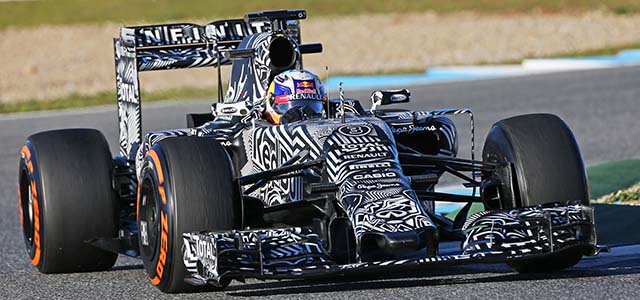
The Red Bull RB11 had no formal launch due its delayed build, and just as the media started to speculate that the team did not have the car ready for the first test it rolled out in a dazzleship livery.
Chief Technical Officer Adrian Newey said: “The design of the RB11 has been very much about understanding what we learned from last season, which was a big regulation change as far as the power unit is concerned and the packaging that goes with that and setting about optimising the car from those lessons.”
Chief Engineering Officer Rob Marshall added: “There are some changes that affect the shape of the front of the car but beyond that most of the changes are under the skin. We’ve identified the areas where we can make improvements and we’ve worked hard on these. There won’t be a lot that’s visible to the naked eye but a lot of hard work has gone into the bits that are hidden.”
A large part of that work has involved improvements to Renault Sport’s Energy F1 power unit, updates that have been made in closer collaboration with the team.
Analysis
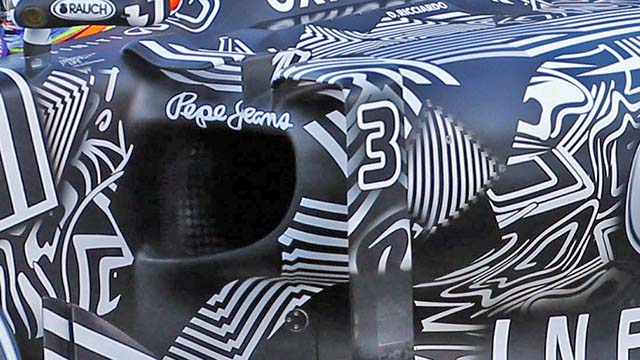
The RB11 appears to have a much smaller level of cooling that either the RB10 or the Toro Rosso STR10 which has a near identical engine installation. Its sidepod cooling ducts are extremely small compared to other cars, including the Toro Rosso.
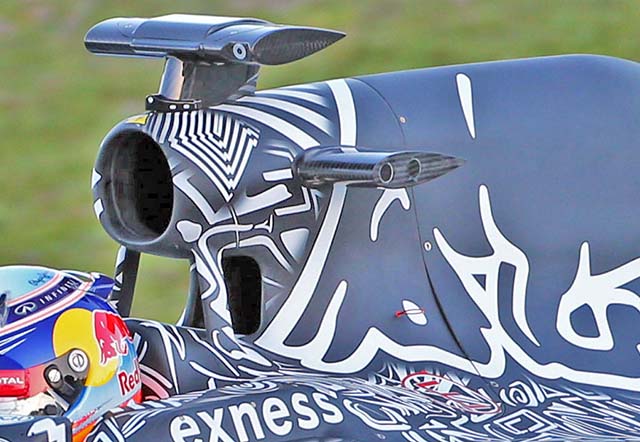
There is additional cooling on the roll hoop of the RB11 (above), the main duct feeds combustion air to the Renault V6 engine. Note the ill fitting engine cover. In concept the roll hoop area largely carries over from the RB10 (below) but the cooling duct below the main duct (and behind the drivers head) has been significantly enlarged.
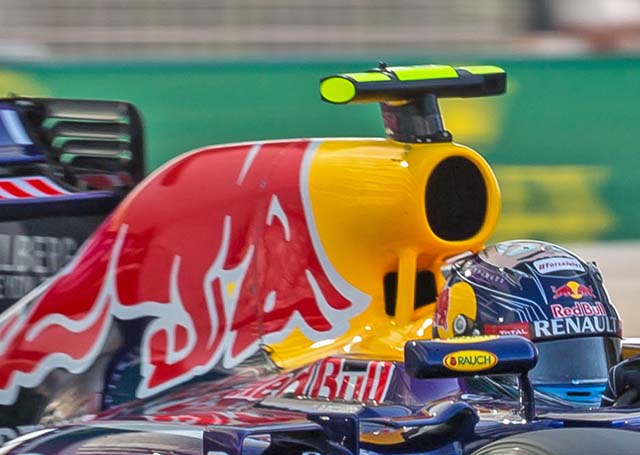
From the rear the amount of undercut on the leading edge of the side pod is clear to see.
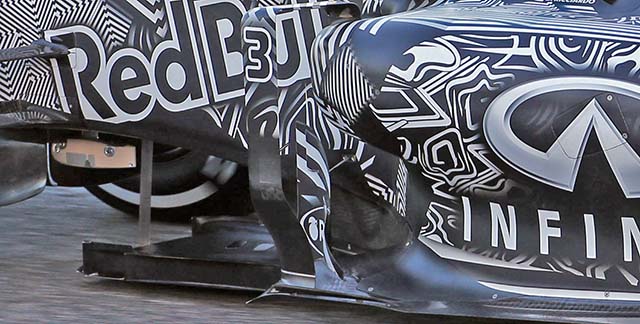
The single pylon rear wing support carries over directly from the RB10, with the DRS actuation passing through the pylon.

It is a concept very similar to that used on the Ferrari SF15-T.
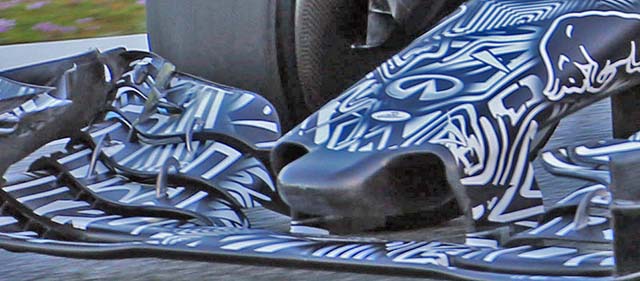
The nose of the RB11 is quite blunt and the crash structure protrudes from it slightly. It appears shorter than those fitted to some other cars.
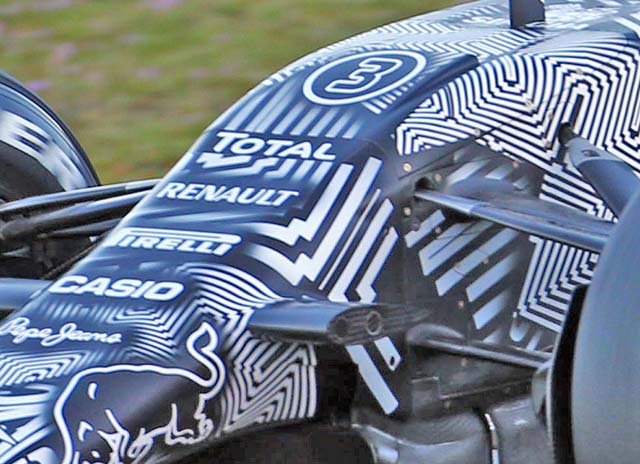
The front bulkhead of the RB11 is fairly large compared to some other 2015 cars. It still features a duct as was the case with the RB10. The entry ducts have been extended from the base of the nose to the side, as can be seen below.

The RB11 retains the pull rod actuated rear suspension that has been a feature of all recent Red Bull cars. Note the extreme undercut at the rear of the car.

The Red Bull is one of only two cars in the 2015 field using the Renault RS34 V6 power unit. In 2014 Renault struggled in terms of performance and reliability but has made steps to improve in 2015.
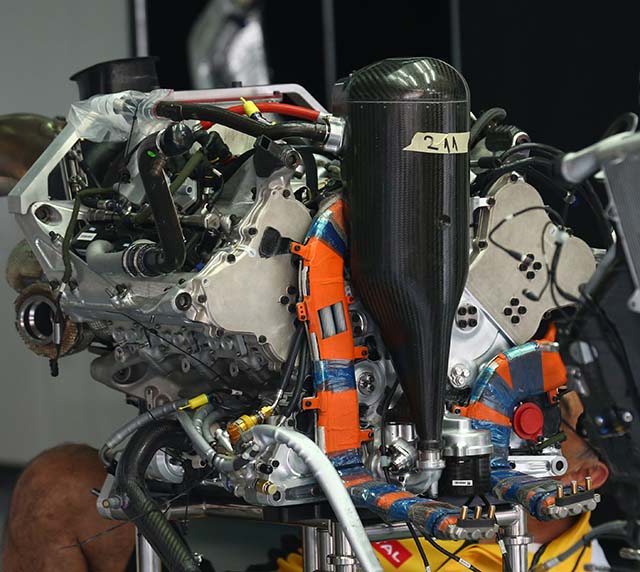
(2014 spec RS34 V6)
The 2015 power unit features a number of revisions ‘We have made some fundamental changes to gain performance and reliability. We have upgraded every system and subsystem, with items that will give the most performance prioritized. The principal changes involve the internal combustion engine, turbocharger and battery. The ICE will have a new combustion chamber, exhaust system concept and variable trumpets, as permitted by the 2015 regulations. The compressor is more efficient, while the energy recovery systems are able to deal with more severe usage’ Rob White or Renault explains.
‘The 2014 unit was already well placed in its centre of gravity, however we have tidied up the packaging to give greater ease of integration into the chassis. Additionally many systems and functions have been rationalized and simplified to further ease the task. In short, there are very few carry over pieces between the 2014 and 2015 power units.’

